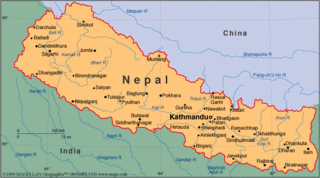
When someone asks me where I am from in Nepal, I often get confused. Geographically speaking Tanahun, where I am from, lies in the middle of the country. Thus, I should say I am from central Nepal. But, because Nepal is divided into five development regions and Tanahun comes under Western development region, I internalized Tanahun as being in the West of Nepal.
Today, suddenly a thought emerged, the geographical nomeniculture of development regions, like almost everything in Nepa,l is Kathmandu centric and reflects what state and rulers perceived themselves as. Eventhough Kathmandu is not exactly at the center of Nepal, the development regions are named as though Kathmandu is the center of Nepal. For example, Kathmandu lies in Central Development region and anything east lies in the Eastern region and most of the Nepal is West. By this logic, Nepal has more West than east or center. There are three different variations of West - Western Development Region (Gandaki, Lumbini and Dhaulagiri Zones), Mid-Western Develoment Region (Rapti, Bheri and Karnali Zones) and, finally Far-Western Develoment Region (Seti and Mahakali Zones).
This geographical distinctions, I feel, have strengthen in Nepali conciousness that Kathmandu is the center of Nepal and thus has validated the over centralization of power and resources in the valley. At the same time, it has legitimized the state and elite's negligence of other parts of country namely mid-western and far-western Nepal. Even the characterization of Seti and Mahakali as "Sudur Paschim" (Remote West, literally, or Far-West) projects an imagery that they actually are too far and to distant to be cared. Thus, the disparity in development and no wonder "Sudur Paschim" is the least developed of all the regions and where Maoists held sway.
What is intriguing is in a country that is only about 1,000 Kilo Meters (550 miles) {Even in the country as large as the US there is East and West, California is in West not Far West} long, we have erected geographical and psychological barriers that mocks integration and equality.
Comments